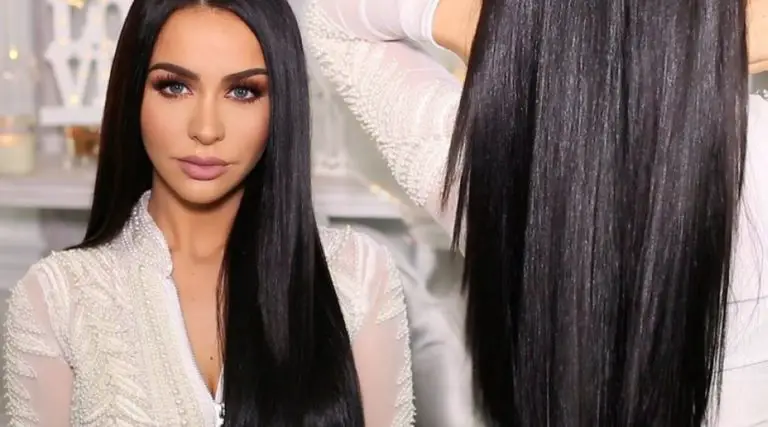How To Prevent Hair Damage While Sleeping: Tips for Pillow Care
Last Updated 10 months ago:
A bad hair day begins when you sleep without taking adequate steps to protect your hair. As you sleep, you rest your head and face on pillows daily. Therefore, it is essential to care for your pillows properly. This is an essential part of skin and hair care.
Most people have dirty pillows, and they may not even know that they are dirty because they look neat. However, pillows collect dust, dead skin cells, and dust mites. Dust mites and their droppings make up about 10% of the weight of a 2-year-old pillow. Understanding how to keep your pillow clean can protect your hair and skin from the damage caused by unclean pillows.
Contents
How To Take Care of Your Pillow To Prevent Hair Damage While Sleeping
Invest in Silk Pillowcases
The best pillows for side sleeping are usually soft and fluffy, providing optimal comfort and support for your preferred sleeping position. However, when considering the type of filling you choose for your pillow, it’s equally important to pay attention to the fabric of your pillowcase, especially for the protection of your hair. Whether you sleep on your side, back, or stomach, the right pillow and pillowcase combination can make a significant difference in preserving the health and appearance of your hair.
Cotton pillowcases absorb moisture from your hair as you sleep, making it more prone to frizz and drying. The threads in the cotton fabric also have bigger fibers than silk fabric. Even the soundest sleeper will toss and turn at least once while they sleep, but silk pillowcases can easily protect your hair, no matter how many times you toss and turn.
Air Out Your Pillows Regularly
As we mentioned earlier, pillows collect a lot of dust mites, which can build up to unsafe levels, triggering allergies and causing reactions on your skin. To eliminate dust mites, regularly fluff your pillows and ensure they are adequately air-dried.
You can place the pillow outside in the sun for a few hours, but avoid hanging it as it may distort shape. Lay it flat on a surface, then switch the sides after a while so that each side gets equal exposure to the sun.
Wash Your Pillows Every 4 to 6 Months
If you sweat a lot or your pillows are stained regularly, wash them more frequently. Some pillows, such as polyester and feather/down, can be machine washed. To wash pillows in the washing machine, put the gentle cycle on to prevent agitation of the pillow and distorting its shape.
Memory foam and latex pillows cannot be machine washed, as they can cause the foam to clump together. Instead, you can spot clean with a damp cloth and some mild detergent, then leave it to air dry for a while.
Washing your pillows regularly will keep them clean, preventing germs from building up and getting on your skin and hair and causing allergic reactions.
Replace Your Pillows Every 2-3 Years
You can prolong the lifespan of your pillows by regularly washing and fluffing them, but even pillows that are washed regularly expire after a while.
To determine if it’s time to replace your pillow, fold it in half and observe if it regains its original shape. If the pillow doesn’t return to its standard shape, it might be due for a replacement.
Other Tips To Prevent Hair Damage While Sleeping
Apart from taking good care of your pillows, here are some other tips that can help you to prevent hair breakage in the long run.
Wrap Your Hair in a Satin, Silk Scarf, or Bonnet Before Sleeping.
Similar to sleeping on a silk pillowcase, silk scarves can minimize friction and frizz in your hair. Wrapping your hair in a scarf before you go to sleep is a way to preserve the hairstyle you have on your head and ensure that you wake up with perfect hair.
A bonnet offers superior protection to scarves and is less likely to slip off while you sleep. When you want to choose a bonnet to buy, try to pick one that is not too big or tight for your head. The perfectly sized bonnet will prevent unnecessary stress on your scalp.
Don’t Tie Your Hair Up With Elastic Bands When You Are About To Go To Bed:
If you have long hair, you may find it frustrating when it gets in the way. When you sleep, you want it out of your face and tie it up. However, tying your hair with an elastic band will cause friction and strain on your edges. This could lead to hair damage because the constant strain on it can cause the hair to be pulled out from its roots. Instead of using an elastic band, opt for satin, silk fabric, or scrunchies to tie your hair.
Make Sure That Your Hair Is Properly Dry When You Want To Sleep:
Our hair is weakest when wet, and getting into bed with wet hair is a surefire way to fast-track hair damage and cause breakage. Sleeping with wet hair can even lead to fungal infections, such as mold growth on the scalp.
To prevent this from happening, you can shower an hour or two earlier than you usually would. Doing this will give your hair proper time to get dry before you finally decide to sleep.
You Can Also Use Essential Oils as a Treatment:
Before sleeping, apply a small amount of essential oils like argan oil, jojoba oil, or coconut oil to the ends of hair. These oils will protect your ends and prevent them from thinning out, while the increased lubrication will also reduce the friction between your hair and the bed and prevent frizz upon waking up.
Conclusion
Taking care of your hair and skin is a continuous and all-encompassing process. If you have a hair care regimen and treat your hair with the best products but don’t properly care for your pillows, it might be counter-productive.
Pillows can quickly accumulate dust and mites, highlighting the importance of regular cleaning. You should wash your pillows as soon as they get dirty. Treat them with vinegar or baking soda. Silk pillowcases protect our hair and ends.
Other tips to prevent hair damage while sleeping include sleeping with silk scarves and dry hair.






